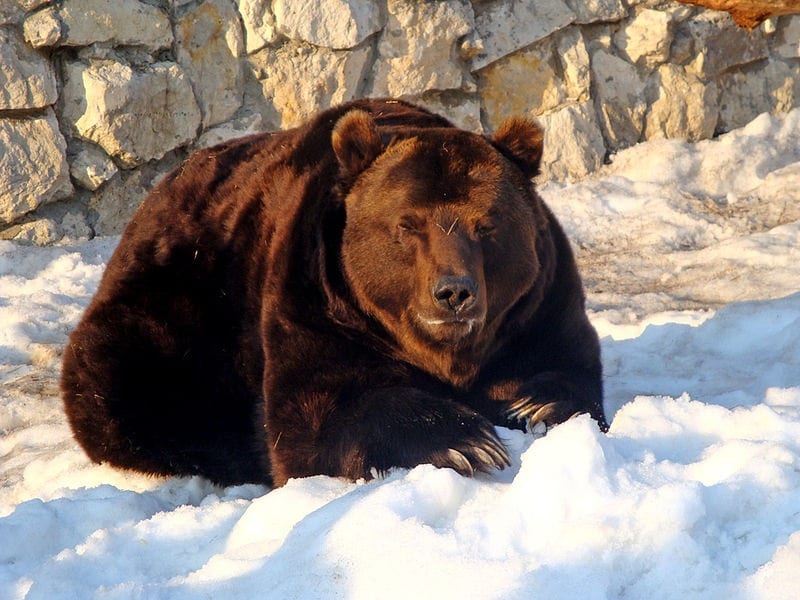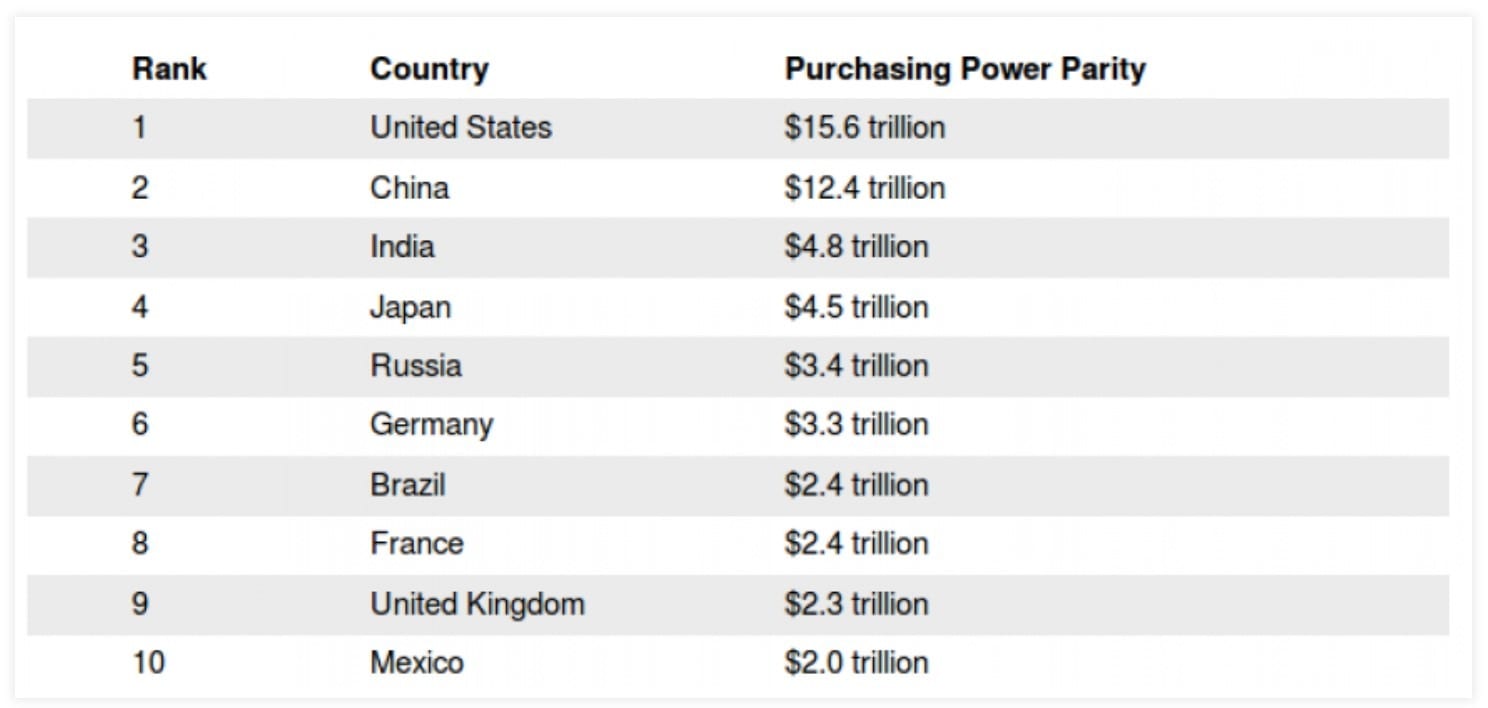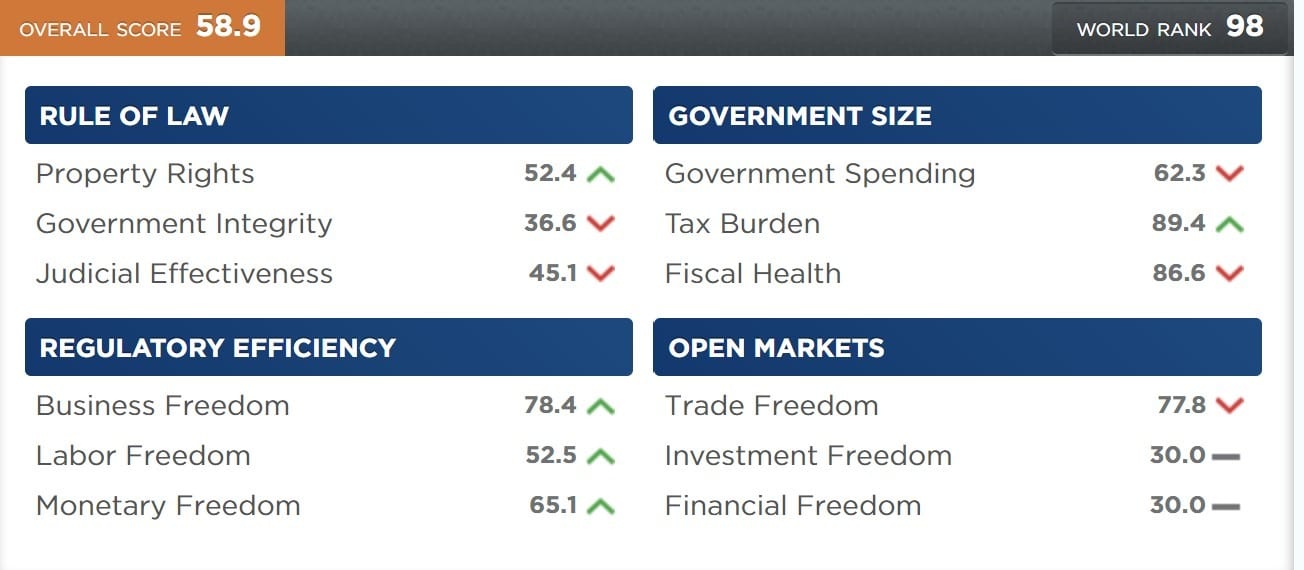
Size Of Russian Economy: It Continues To Trend Upwards
The economy is expanding on a purchasing parity basis (PPP); PPP is the best way to compare the economies of different nations. When one uses this formula, China is now the world’s largest economy as the dollar goes a lot further there than in the US. So while the US on a dollar basis is still the world’s largest economy, it falls behind China when one takes PPP into consideration.
The report was published last week in an annual ranking of GDP. The World Bank also updated their ranking of countries in terms of gross national product (GNP) per capita, grouping Russia in the ‘high income’ nation block, with individuals yearly income of $12,616 or more.
The United States was ranked by the World Bank as the world’s largest economy by purchasing power parity last year with $15.7 trillion, followed by China with $12.5 trillion, India with $4.8 trillion, and Japan with $4.5 trillion.
Prime Minister Dmitry Medvedev publicly lauded the advance on Monday, as did President Vladimir Putin, but warning his country still needs to be financially vigilant.
“The World Bank has concluded that Russia has the purchasing power of the fifth economy in the world. According to this indicator, we are ahead of the Federal Republic of Germany. But we have a lot of areas that still need special attention”, Putin said at a socio-economic meeting in the Sakhalin region, an energy-rich Far East island north of Japan where Rosneft just put the final touches on a new drilling platform ‘Orlan’ in the Sea of Okhotsk. Sakhalin-1, a joint venture with Japan, India, and the US, has reserves of 2.3 billion barrels of oil and 485 billion cubic meters of gas. Full Story

Size Of Russian Economy and Several Other Nations Displayed over Time
Interesting factoids about Russia

Russia’s economic freedom score is 58.9, making it’s economy the 98th freest in the 2019 Index. Its overall score has increased by 0.7 points, with higher scores for monetary freedom and property rights outpacing declines in judicial effectiveness and trade freedom. Russia is ranked 41st among 44 countries in the Europe region, and its overall score is below the regional and world averages.
The government’s standoff with the West has strengthened statist, nationalist, and protectionist trends, delaying Russia’s transition from a centrally planned economy to a more market-based system. Reforms have been subordinated to the imperatives of political stability and government longevity. The private sector has been marginalized by structural and institutional constraints caused by ever-growing government encroachment into the marketplace. Large state-owned institutions and an inefficient public sector dominate the economy. The judiciary is vulnerable to corruption, and weak protection of property rights undermines prospects for optimal long-term economic development. Full Story
Russian is Now A Powerhouse In Agriculture
The Peretyatko brothers embody the optimism in Russian agriculture, a booming sector in an otherwise sluggish economy. Production has increased by more than 20% in the past five years, despite a broader recession and now stagnation. “That’s what’s called a breakthrough,” President Vladimir Putin gushed as he discussed the upbeat figures at a recent meeting with farmers.
Export revenues from agriculture—which reached over $20bn in 2017—now exceed those from typically strong earners such as armament sales. Grain has been the star. In 2016 Russia became the world’s leading exporter of wheat for the first time since before the Russian revolution (see chart). “Grain is our second oil,” said Aleksandr Tkachev, the agriculture minister at the time.
The future also looks bright owing to global trends. As populations grow, so too should food consumption, especially in some of Russia’s largest export markets, such as Turkey. Rising temperatures and improving technologies mean longer growing seasons, higher crop yields and wider swathes of arable land in much of Russia. “Everyone is moving north,” says Yuri. His son has started farming in the Belgorod region, closer to Moscow.
Russia also has latent agricultural potential. Millions of hectares of land abandoned after the Soviet collapse could be reclaimed. Investments in digital technologies, where Russia lags, would lift productivity; downstream food manufacturing is underdeveloped. But tapping these possibilities would need infrastructure improvements. Grain terminals have struggled to cope with record harvests. Outside the fertile south, much farmland sits far from ports. Some also worry about competition as a concentration in the hands of giant agro-holding firms increases. Full Story
Other Articles of interest
End Of Bull Market: Masses Worry Higher Rates Will Kill This Bull (Nov 28)
Is The Bull Market Over? Mass Sentiment States It’s Not(Nov 27)
Stock Market Under Trump: What’s the Next Stop (Nov 22)
Bitcoin Price Update: Has Bitcoin Bottomed? (Nov 20)
Soak The Rich and Lose The Rich As Was The Case With France (Nov 14)
The rent is too damn high: Are you a cost-burdened renter? (Oct 28)
Study: Average American Household Income (Oct 7)
SSE Composite Index: Is It Ready To Breakout or Crash Again (Oct 2)
BTC Price: What’s Next For Bitcoin (Sept 27)
Gold Charts In Multiple Currencies: Should You Get Into Gold (Sept 16)
Bull Market Example: This Market Is The Best Example Of A Bull Market (Aug 31)
Trade War News: US Set To Win Trade War With China (Aug 30)
Swedish Currency: Worst Currency But Outlook Could Turnaround (Aug 15)
CNN Ratings Continue To Slide In 2019 (Aug 5)
Semiconductor stocks: China’s is poaching Talent at breakneck speed (June 29)


